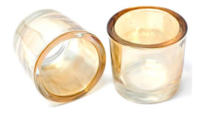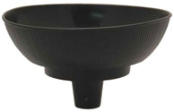November/December 2021 Competition
The competition this year is to make a wig stand. This to help a children’s
cancer charity, Little Princess Trust. The aim is that all the stands will go to
the Trust to help those children who have lost their hair (hopefully
temporarily) look after their wigs.
To encourage members to take part, (not that any of you need
encouragement) there will be a
1st prize of £50 in cash and a 2nd of £25 of Yandle’s vouchers.
John has kindly produced some photos of a completed stand and pictures
to help you on your way. When you open the link, you will see a photo of
one he has made.
CLICK HERE FOR THE LINK
Dimensions.
The head should be between 4.5-6 inches in diameter. The overall height
should be about 13 inches high. This is short enough to allow those with
a shortish lathe bed to make a stem suitably long. If anyone with a longer
bed want to make one a bit taller, that will be good. I will forward an
email from Kevin who has some attachments that might help connecting
the 3 parts.
The wig will not "fit" the stand: it is merely draped over to hold its form.
The wig’s length will be matched to the height of the stand and not the
other way around.
As far as finish goes, they are perhaps best left sanded (you need to
make sure they are really smooth especially on edges to avoid snagging
with the hair) and bare as oil, wax polish etc will wear off onto the wigs
and paint is not a good option long term. A melamine lacquer is OK. Wigs
are bonded onto a material than can be abrasive against finishes.
Traditional ones used when wigs were fashionable were in woods such as
mahogany, rosewood etc, not applicable now but sapele is a good
alternative. Woods that can chip such as oak and ash are OK bit not ideal.
Sycamore, maple are good. But these are only suggestions.
John will talk a bit about making them during his demonstration on
Thursday. Also all the information you need will be on the club website.
I hope very much that everyone will take part. The basic object is quite
simple, but you can make a big difference in the design to make it look
more attractive.

December 2022 Competition
This year the club is supporting the
“Wiltshire Air Ambulance”
(WAA).
Members are asked to produce an item that will sell in aid of the charity.
The Gallery night will have a top table of all contributions which will be
judged in three categories. Prizes will be awarded for each category:
Novice
Intermediate
Advanced
Chestnut products have kindly donated
£150.00
of products in return
for the club supporting them at their Swindon show earlier in the year.
If you wish to sell the turned item privately to a family member or friends
and donate the cash that is absolutely fine, but we ask that you bring the
item along for display so that it can be entered for the competition on the
evening of 8 December. Those turned items not previously sold will go on
display at the WAA Charity Shop, Devizes and will be sold by the shop in
aid of their funds.
If you should have any queries, please contact the Phil Lobb –
chairman@kennetandavon.com
December 2023 Competition
This year our Gala Night Christmas Competition will be to make a candlestick/holder. There
will be no classes, it will be a free-for-all and any design goes, from tea-light holder all the
way up to church pillar candle stick. It must, of course, be suitable for use with a real flame
candle.
Only one entry per person will be allowed, though a pair or set could be entered, to be judged
as a single entry. We are hoping to get outside judges (non-wood turners) in so judging will be
done on their personal preferences, not necessarily on the technical quality. There will be no
first/second/third but there will be prizes for the three items selected by our judges. In addition,
our professional turners, John and Pete, will award commendation certificates to those they
believe to be of merit from a turning point of view, so technique, design and finish will all come
into play. You could, of course, win a prize and a commendation certificate.
Notes on making candlesticks by Pete Moncrieff-Jury
Candlesticks in their most simple form consist of four parts. A base, a stem, a top and a fire-resistant
cup or plate. There are basic rules that should be obeyed when making candlesticks, some for aesthetic
reasons and some for safety and to make the item fit for purpose. Once these are recognised anything
goes as far as design is concerned.
Making a candlestick (or tea light holder) without using a fire-resistant insert or plate is bad practice as
the wax can reach a higher temperature than the burning temperature of the wood. I and other turners
have had to try and repair some made this way where the wood has started to char. In all designs the
base needs to be wide enough to safely keep the candle upright and ideally will be the same or of a
larger diameter than the top, preferably larger as only a small difference can make the proportions look
wrong if smaller. Take into consideration the length of the stem; the taller it is then the wider the base
should be or it could become top heavy (don’t forget to allow the length and weight of the candle in to
this when designing). If you decide on doing some work such as carving or texturing think of what wood
you are going to use. Softer woods such as tulip wood, pine etc or open grained woods such as ash and
oak are not really that good for the fancy work as they are difficult to get a good clean cut, not impossible
but not easy.
The cup or plate will dictate the size of candle and plates should be wider in diameter than the candle
intended to use on it. This allows and drips to collect on the plate instead of trickling down the side of the
stick and also gives better stability.
Plates come in several designs as shown below. It is possible to make your own by using pewter or
adapting some other metal plate. Cups are usually made of metal or glass and don’t need to be made
specifically for use on candlesticks. Make sure they are securely inserted into the top of the candlestick.
Gluing in is optional. If using a glass insert it is a good idea to keep it unglued so that it can be taken out
to clean.
As far as design is concerned, I am afraid there is no single answer. Long and slender, short and stubby,
decorated, textured, off centre, all are acceptable and to some extent beauty is in the eye of the beholder.
Note that any design should be either in pairs, as exact as possible or in odd numbers e.g., 1, 3, 5 etc.
Single candle pillars should be dramatic. If small, slender or delicate single ones always look as if something
is missing. To see some ideas, have a look on my website at www.bodrighy.co.uk/candlesticks-vases.html
or go to Google. Don’t limit yourself to wooden ones for ideas.
The candlesticks can be made in a single piece of wood or in separate pieces for each section. The latter
allows for designing with the use of different woods. One each for the different sections though usually
it looks better with just two contrasting woods, one for the top and bottom and one for the stem.
Examples of Plates and Cups
Home Made Pewter Plate
Steel Cups with Screw Holes

Glass Candle Cups

Aluminium Tea Light Holder
Aluminium Cups with Rims

Glass Candle Plate
(Freestanding on top of
candlestick)

Candle Plates with Spikes
(For larger Candles. Various Finishes)
Black Candle Cup for larger Candles
(Inserted into shaped recess on top of Candlestick)



Winners (from Left to Right)
VIC ATKINS, HOWARD WATERS, CHRIS BROWN




























